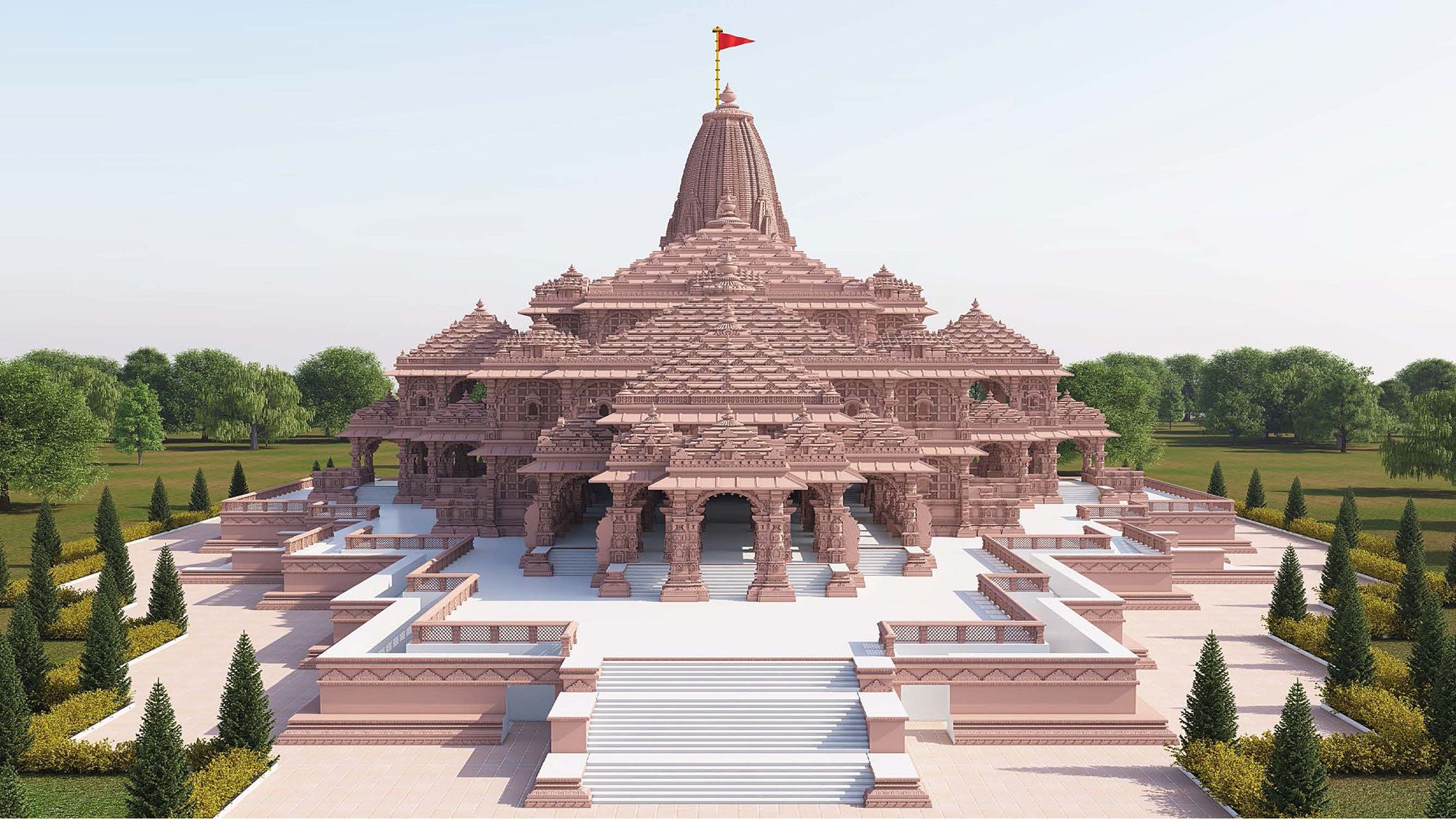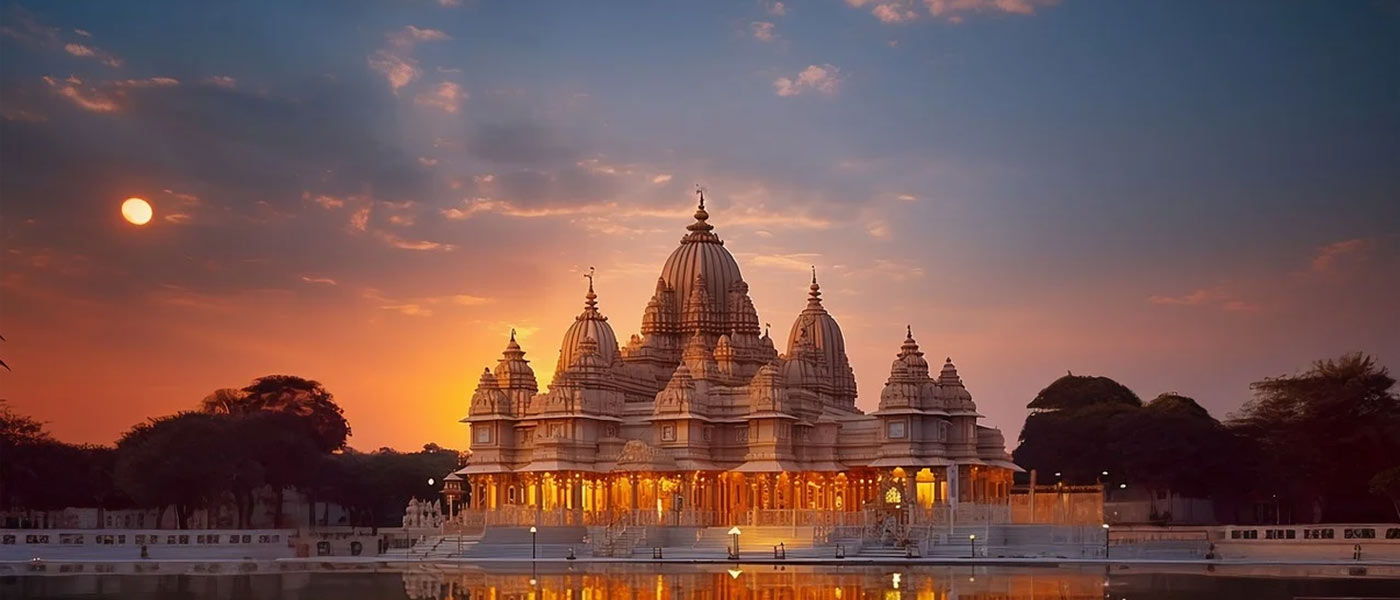IntelBlog
January 22, 2024
Ram Mandir: A Masterpiece of Engineering
Know everything about Ayodhya Ram Mandir, Inauguration Date, History, Architecture and more.
Note: This post offers a brief insight into the Ram Mandir, with a clear intention to provide information, not to offend any religious beliefs. Let's explore its historical context with a respectful and open-minded perspective.
Copy Post Link:
https://1arc.github.io/blog/blogs/ram-mandir

Ayodhya, Ram Mandir
The Ayodhya Ram Mandir is a Hindu temple dedicated to Lord Ram. It is located in Ayodhya, Uttar Pradesh, India. The Lord Shri Ram temple has been the centre of a political and religious dispute in India which dates back to 1858. After the dispute was resolved in November 2019, a new temple at the birthplace of lord Shri Ram or Ram JanmBhumi is built.
The Ram Mandir Ayodhya organised the ‘Pran Pratishtha’ ceremony on January 22, 2024, which was performed by the Prime Minister of India, Shri Narendra Modi.
Let's learn more about the opening date, history, architecture, and general information.
The Ayodhya Ram Mandir is a Hindu temple dedicated to Lord Ram. It is located in Ayodhya, Uttar Pradesh, India. The Lord Shri Ram temple has been the centre of a political and religious dispute in India which dates back to 1858. After the dispute was resolved in November 2019, a new temple at the birthplace of lord Shri Ram or Ram JanmBhumi is built.
The Ram Mandir Ayodhya organised the ‘Pran Pratishtha’ ceremony on January 22, 2024, which was performed by the Prime Minister of India, Shri Narendra Modi.
Let's learn more about the opening date, history, architecture, and general information.

History
Ayodhya Ram Janmabhoomi history is centuries old and is built on the site that is believed to be the Janmabhoomi or the birthplace of Lord Ram, an incarnation of Vishnu and one of the most admired Hindu deities. In the 16th century, the Mughal emperor Babar demolished the temple and built a mosque in its place. The mosque, known as the Babri Masjid, stood on the Ram Mandir site for centuries. In 1992, it was demolished by Hindu nationalists triggering communal tensions and widespread violence in the country.
The Mandir-Masjid dispute revolved around the ownership of the site and hence the Ayodhya location dispute has been controversial in Indian politics for decades.
In the year 2019, the dispute was finally settled by the Supreme Court of India, which ruled in favour of the construction of a Ram Mandir on the site. A trust was formed by the Indian government, Shri Ram Janmabhoomi Teerth Kshetra to oversee the construction of the temple. As a compensation, area near Ayodhya was given to the muslims.
The Mandir-Masjid dispute revolved around the ownership of the site and hence the Ayodhya location dispute has been controversial in Indian politics for decades.
In the year 2019, the dispute was finally settled by the Supreme Court of India, which ruled in favour of the construction of a Ram Mandir on the site. A trust was formed by the Indian government, Shri Ram Janmabhoomi Teerth Kshetra to oversee the construction of the temple. As a compensation, area near Ayodhya was given to the muslims.

Inauguration Date
The Ram Mandir Ayodhya was inaugurated on 22nd January 2024, Monday by Narendra Modi, the Prime Minister of India. The inauguration of Ram Mandir was attended by many Bollywood Actors, Indian Celibirities and spiritual leaders including, Dalai Lama, Mata Amritanandamayi, Yoga guru Baba Ramdev and Jaggi Vasudev. The temple trust also invited business tycoons, including Mukesh Ambani, Gautam Adani, and Ratan Tata

Construction & Architecture
In March 2020, the Shri Ram Janmabhoomi Teerth Kshetra Trust began the first phase of construction of the Ram Mandir Ayodhya location. The construction was put to a halt as it was temporarily suspended due to the COVID-19 pandemic lockdown, imposed by the Indian government. After a few months, the construction officially started again in August 2020 with the Bhoomi Poojan Ceremony.
Two Shaligram rocks which are reportedly 60 million-year-old were sent from the Gandaki river in Nepal to carve the idol for Ram Janki mandir in February of 2023. These stones weigh 26 tonnes and 14 tonnes respectively.
Two Shaligram rocks which are reportedly 60 million-year-old were sent from the Gandaki river in Nepal to carve the idol for Ram Janki mandir in February of 2023. These stones weigh 26 tonnes and 14 tonnes respectively.
The Ayodhya Ram Mandir is built in the grand Nagara style of temple architecture, characterised by the towering shikhara or spires. The temple is spread across an area of 2.77 acres and is built using pink sandstone. It is surrounded by several smaller shrines in a large courtyard dedicated to other Hindu deities. The temple has a giant Shaligram stone, a naturally black-coloured stone believed to represent Lord Vishnu which was brought from the Gandaki River in Nepal.
The temple has three floors and is 161 feet high. The first floor of the temple is dedicated to Lord Ram, the second floor of the temple is dedicated to Lord Hanuman, and the third floor is a museum showcasing the history and culture of Ayodhya.
The temple complex also includes a Yagyashala, a hall for conducting Yagyas or Hindu fire rituals, a medical facility, and a community kitchen. The temple complex is expected to become a major cultural and religious centre and is spread over 67 acres (10 acres for the temple and 57 acres for the complex), attracting millions of devotees from around the world. Ram Mandir area in km is 0.040 sq. km and the complex area is 0.23 sq. km.
The temple has three floors and is 161 feet high. The first floor of the temple is dedicated to Lord Ram, the second floor of the temple is dedicated to Lord Hanuman, and the third floor is a museum showcasing the history and culture of Ayodhya.
The temple complex also includes a Yagyashala, a hall for conducting Yagyas or Hindu fire rituals, a medical facility, and a community kitchen. The temple complex is expected to become a major cultural and religious centre and is spread over 67 acres (10 acres for the temple and 57 acres for the complex), attracting millions of devotees from around the world. Ram Mandir area in km is 0.040 sq. km and the complex area is 0.23 sq. km.

Specialities
The temple is equipped with modern facilities like solar panels, ramps for elder devotees, medical aid, bank/ATM, public utilities, and food shelter for devotees. The Mata Sita Rasoi Annakshetra is a food shelter that offers mass-feeding facilities for devotees visiting the temple. It features a kitchen, large food storage, systematic cutlery and utensil storage, and hand-washing facilities.
- • 2100 kg Bell: A bell weighing 2,100 kg made of ‘Ashtadhatu’ (an alloy of eight metals) was prepared for Ram Mandir in Jalesar, Uttar Pradesh. The bell took two years to get prepared by the local artisans.
- • Gifts from Different Places: More than 3,000 gifts for Lord Ram Mandir from Janakpur in Nepal arrived Ayodhya on the Inauguration day. Janakpur is believed to be Goddess Sita’s birthplace. The gifts include silver shoes, ornaments and clothes. The gifts were transported in a convoy of around 30 vehicles from the Janakpur Dham Ramjanaki Temple in Nepal to Ayodhya.
- • Time Capsule: A time capsule 2000 feet below the Ram Mandir has been placed. The capsule contains all the facts about the Janmabhoomi so that no controversy related to the site will arise again.
- • Shree Ram Bricks: Special bricks named after Lord Ram were used to construct the Shri Ram Janmabhoomi Temple in Ayodhya. These bricks were made using a unique process to make them stronger and more durable than regular bricks. They are also inscribed with the words “Shri Ram 2023” to commemorate the year of the temple’s construction.

Conclusion
As the majestic architecture and spiritual grandeur of the Ayodhya Ram Mandir unfold, it invites contemplation beyond its role as a construction project. It signifies a shared journey, where individuals of diverse beliefs and backgrounds came together to realise a common dream. Within the intricate carvings and sacred inscriptions, discernible are the resonances of unity that bind the nation.
In its grandeur, the temple stands as a living testament to the potency of collective efforts, faith, and cultural resilience. It extends an invitation to believers and admirers alike to bear witness to a cultural renaissance — one that surpasses religious boundaries and embraces the shared heritage of a nation.